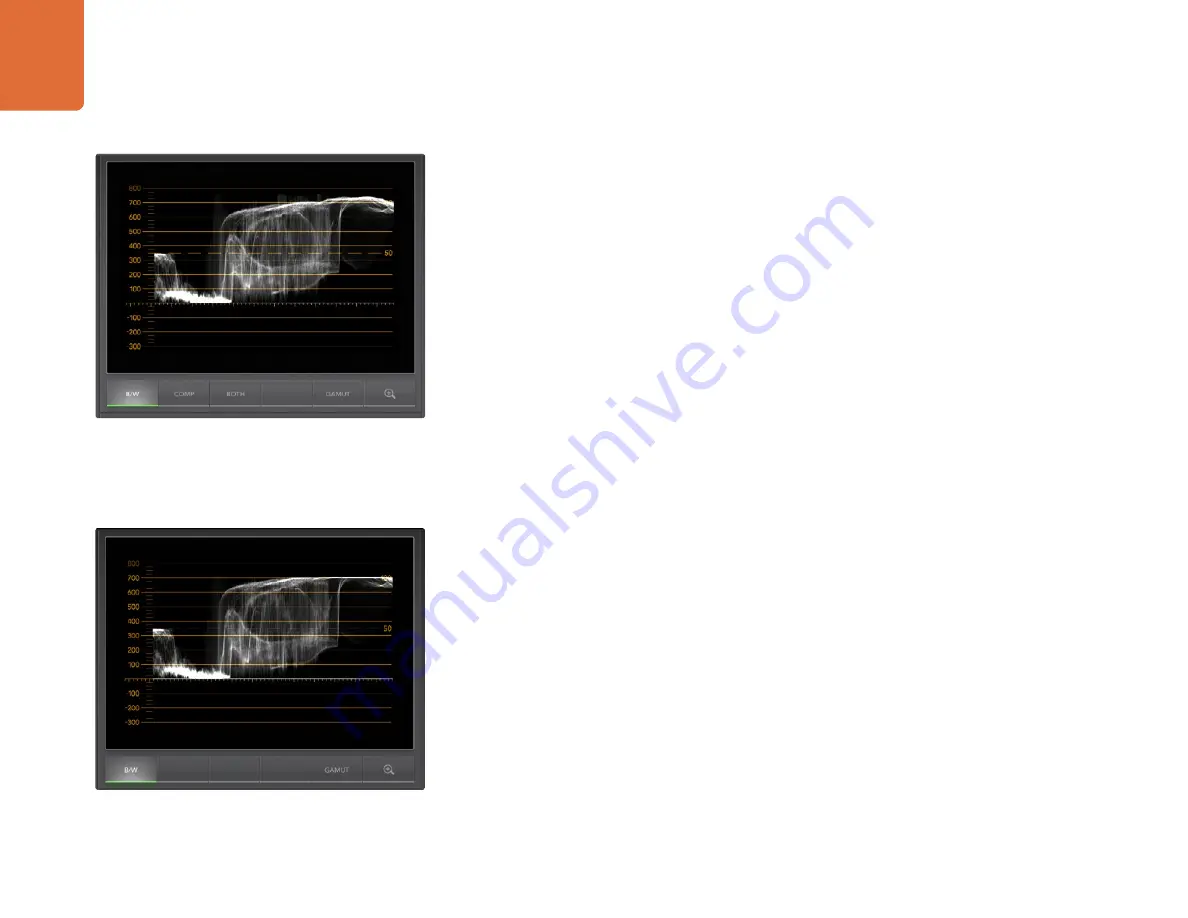
Waveform Monitoring
119
Waveform Display
The Waveform Display is similar to traditional composite waveform monitors seen in many broadcast
studios.
On Mac OS X, B/W is always selected to show the luminance view, which provides a digitally encoded
waveform similar to traditional luminance waveform monitors. The luminance view is very useful when
adjusting luma (brightness) levels in an image. Turn on the GAMUT function, and any illegal luma levels
will be highlighted in bright red, so they are easy to see. Instructions for setting luma limits can be found in
the Error Logging Display section of this manual. Traditional luminance waveform monitors only supported
composite analog standard definition video. However UltraScope’s luminance view works in high definition
as well as standard definition, so you have a consistent and easy way to adjust luma levels even when
monitoring high definition digital video formats!
For Windows users, the composite view is exciting because it’s a fully digitally encoded composite waveform
view and similar to a traditional waveform monitor. This provides a much easier way to align to test signals,
such as color bars, because you can use the composite waveform exactly the same way as it has always been
used. Composite view also works in high definition, so you have a consistent and traditional way to adjust
video even when working in high definition!
When BOTH view is selected on a Windows PC, the composite and luminance waveforms display side by
side in a twin view. This is incredibly useful when adjusting video levels or color correcting. It’s impossible for
a vectorscope to show which objects in the video have color because a vectorscope just shows what colors
are in the whole image and not which objects have color. When color correcting, you often need to look for
specific parts of the image, remove the color and produce a neutral state. This is because the composite
waveform is the same as the luminance signal but with chroma added.
Choosing this twin view makes it easy to identify similar items in the luminance and composite waveforms,
and if more blur or chroma is observed in the composite area, the item has color. If some part of the
video image is neutral gray, then it should look the same on both waveforms because no chroma will
be present. With the twin view, you can look around the waveform and see the levels of color or chroma
of various objects. As you color correct, the composite waveform will display more or less chroma in
the video signal. Now you can see if specific objects in the video image are color or black and white.
You can make technical and creative decisions using the Waveform Display.
When the Waveform display is zoomed in, you can toggle between COMP and B/W, and view the same
region of an image in the zoomed display.
Waveform Display on Mac OS X always shows Luminance view.
Waveform Display on Windows can show Luminance, Composite
or Both views.













































